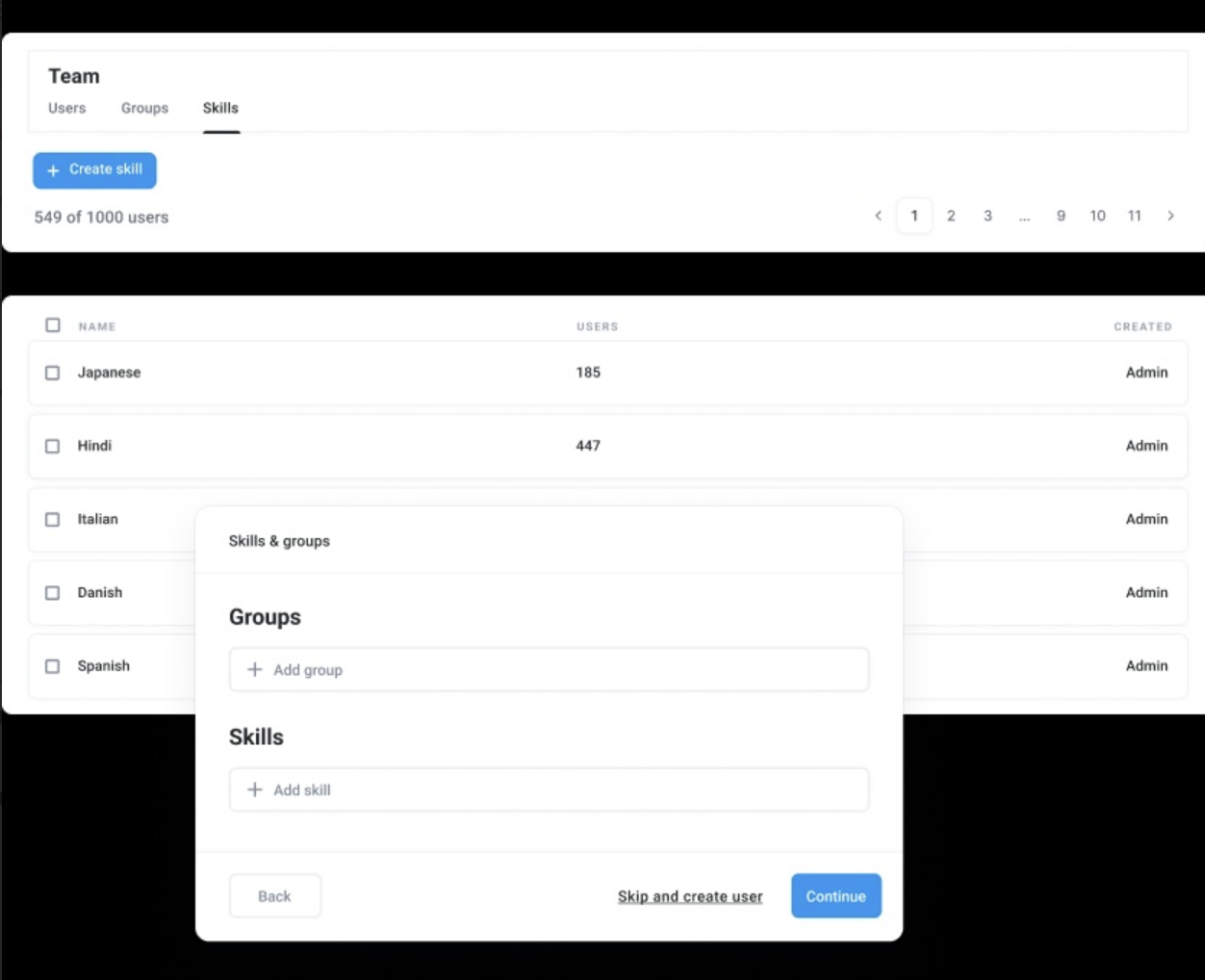What Are IVR Payments & How To Implement Them

After getting off a long shift, Sarah remembers her utility bill is due. She calls your customer support line, hoping to make a quick payment before it’s too late.
What happens next doesn’t depend on Sarah—it depends on how efficiently your payment system handles the request. If your setup is manual or lacking key capabilities, the process is slow, agents get tied up, and Sarah might not even be able to complete her payment at the first try.
This is where interactive voice response (IVR) payments come in. IVR lets customers make secure payments over the phone without needing to speak to an agent. It’s faster for them, cheaper for you, and helps reduce average handling time, increase payment completion, and prevent agent burnout.
In this article, we’ll explain how IVR payments work, what key features to prioritize, and how to implement them effectively.
Key Takeaways:
- IVR payments help reduce call center costs and increase payment completion rates, making them a cost-effective solution for businesses.
- Following best practices for IVR payment security ensures PCI compliance and protects sensitive customer data from fraud and breaches.
- CloudTalk offers the key features you need for secure IVR payments, including PCI compliance, CRM integrations, and real-time transaction reporting.
Support secure payment processing with IVR
How IVR Payments Work And Why They Matter
Sarah is one person with one bill to pay—imagine hundreds or even thousands of customers just like her. Without IVR payments, live agents would be responsible for confirming their identity, collecting payment details, and processing the transactions.
IVR payments allow your automated system to process all that information without an agent needing to step in, which directly impacts your operational efficiency and revenue. Below, we look at what IVR payments are and how they fit into your customer journeys.
Defining IVR Payments For Phone-Based Transactions
IVR payments are automated systems that allow customers to make payments directly over the phone without speaking to a live agent. These self-service solutions use touch-tone keypads or voice recognition to securely process financial transactions.
Common uses of IVR payments include:
- Bill payments and processing
- Insurance premium collections for policy renewals
- Loan or credit card payments
- Order processing for retail or ecommerce sites
- Account top-ups
- Subscription renewals for services with recurring billing
How IVR Payments Fit Into Call Flows And Customer Journeys
You’ll be relieved to know that when Sarah called customer support, she didn’t find herself stuck listening to call queue music. Instead, she heard “Press 2 to make a payment.” She followed a quick prompt and her payment was processed in seconds—no agent needed.
IVR payments may fit into multiple places in a call flow, including:
- A self-service option in the main menu (“Press 2 to make a payment”)
- A transfer option after speaking with an agent about an outstanding balance
- A direct outbound call campaign for payment collection
The key advantage of IVR payment systems is efficiency and convenience for both the customer and your operations. We explore those business advantages below.
Key Benefits of IVR Payments for Businesses
Sarah was able to manage her payment confidently and without any hassle, and there are plenty of benefits for your business, too. These include:
- Higher payment completion rates thanks to a smoother customer experience
- Increased self-service success, reducing reliance on live agents
- Lower workload for support teams, helping prevent burnout
- Operational flexibility to handle spikes in call volume without increasing headcount
- Reduced operational costs from fewer agent-assisted transactions
- Secure, PCI-compliant payment processing
For example: With CloudTalk’s IVR payments, you can reduce average handle time (AHT) by removing routine payment tasks from the agent workflow.
And because CloudTalk integrates with CRMs like Salesforce and HubSpot, payment data flows automatically to customer records and billing systems—no manual updates or reconciliation needed.
Security And Compliance Factors For IVR Payments
To get the full benefits of IVR payments, you need to follow security best practices and comply with regulations like PCI DSS to protect sensitive financial data.
The risks of poorly secured payment systems are substantial:
- Data breaches exposing customer financial information
- Fraudulent transactions through inadequate authentication
- Regulatory penalties for non-compliance
- Damaged reputations and loss of customer trust
Effective IVR payment security relies on multiple protection layers working together. Key security measures include:
- End-to-end encryption that protects payment data during transmission, ensuring card details can’t be intercepted
- Tokenization that replaces sensitive card information with non-sensitive tokens for storage and processing
- Comprehensive audit trails that track every step of the payment process for regulatory compliance and issue resolution
- Multi-factor authentication that verifies customer identity before payment initiation
For example: CloudTalk’s comprehensive security framework provides the foundation needed for secure payment processing, with advanced encryption and tokenization features to help you comply with industry standards.
Essential Features For Your IVR Payment System
When customers like Sarah call in to make a payment, they expect the process to be fast, secure, and reliable. Without a well-designed IVR payment system, they might struggle to complete the transaction—leading to late fees, frustration, and more calls to your support team.
By prioritizing the features below, you reduce friction, improve completion rates, and keep your call center running efficiently.
PCI Compliance And Secure Data Handling
Payment security must be your top priority when accepting card data over the phone. Look for platforms that offer the following:
- Call recording controls that automatically pause when sensitive information is entered, preventing card details from being stored in recordings
- Encrypted data transmission that protects information as it moves between systems
- Access control mechanisms that limit which team members can view transaction details
- Tokenization that replaces actual card data with unique identification symbols to protect customer data
pro tip
🔎 Discover more:
Explore CloudTalk’s security infrastructure in our white paper, covering data protection measures, compliance standards, and internal policies.
Integration With CRM And Billing Systems
Seamless data flow between your IVR payment system and core business tools eliminates manual work and reduces the risk of errors. When your IVR integrates directly with your CRM and billing systems, customer records update automatically—reflecting real-time account balances, payment status, and transaction history.
CloudTalk supports this with ready-made integrations for a wide range of CRMs and billing platforms, making it a strong choice for IVR systems for small businesses that need to stay efficient without sacrificing customer experience.
Real-Time Transaction Status And Reporting
Your company needs clear visibility into payments as they happen. Real-time reporting helps you spot issues, track performance, and identify opportunities to streamline your payment process. It also provides the documentation required for compliance and audits.
With CloudTalk, you can track key metrics like transaction status, payment completion rates, and processing times—all in one place—so your team can stay on top of operations without digging through disconnected systems.
Self-Service Options And Fallback To Live Agent
Self-service is efficient for most payment transactions—but not every issue can be resolved without help. Your IVR routing paths should offer a smooth fallback to a live agent when needed.
Flexible call flows let customers attempt self-service first, while still giving them a clear, fast way to speak to someone when necessary. Skills-based routing ensures escalated calls reach the right agent without extra transfers.CloudTalk’s Call Flow Designer supports these flexible pathways, so customers can complete transactions through their preferred channel—whether fully automated or with agent support.

pro tip
Discover how to customize your call flow
Learn about Call Flow Designer
Best Practices To Implement And Optimize IVR Payments
IVR payment systems dramatically improve collection rates while reducing the cost per transaction. With these best practices, you’ll see better business outcomes, and Sarah can avoid incurring any late fees or having to call back again tomorrow.
Map Payment Workflows Into Your IVR Builder
Mapping payment workflows allows you to design the step-by-step path that customers follow when making payments through your IVR system. It details how payment transactions are managed from start to finish.
Start by designing a payment flow that collects only essential information, with clear escape routes for customers who need assistance. The most effective payment workflows typically include:
- Brief authentication using account numbers or unique identifiers
- Clear payment amount confirmation before processing
- Simple keypad entry for card details or bank information
- Immediate confirmation of successful payments
This structured approach prevents customer confusion and minimizes abandonment rates during the payment process.
Align Payment Prompts With Your Customer Experience Strategy
Your IVR payment prompts should match your brand voice and customer experience goals. The language and tone you use during payment collection significantly impact completion rates.
For example, a healthcare provider might use gentle, reassuring language: “To process your payment securely, please enter your 16-digit card number followed by the pound key.”
Meanwhile, a B2B service may automatically ask users if they want to set up recurring automatic payments following their initial transaction.
Implement regular IVR testing to assess different approaches with specific customer segments to identify which prompts drive the highest completion rates for your audience and most common use cases.
Link Payment Events To CRM And Analytics For Full Visibility
Connect IVR payment activity directly to your CRM and analytics tools to eliminate data silos and reduce manual work.
When a customer makes a payment through your IVR system, that information immediately feeds into their record in Salesforce, HubSpot, or other integrated platforms. This gives your team real-time visibility into payment status without manual updates.
This ensures your support and finance teams always have accurate, up-to-date information when handling account questions or follow-ups.
Track Drop-Off Points And Payment Failures
Data shows that most payment abandonment happens at predictable points in the IVR journey. Identifying these critical moments is essential for optimization.
CloudTalk’s analytics suite helps you pinpoint exactly where customers abandon payment attempts, which often include:
- During identity verification
- When entering card information
- At confirmation stages
- While waiting for processing
By identifying these friction points, you can redesign prompts, adjust timeout settings, or add helpful instructions that increase payment completion rates.
Reduce Friction With Pre-Filled Data And Clear Prompts
Using existing customer data to pre-fill information reduces payment time and potential customer frustration. Your smart IVR system can recognize a customer’s number, pull important information from your CRM, and automatically complete information like their account number.
For returning customers, your system can offer quick-payment options: “Press 1 to pay your outstanding balance of $84.50 using your Visa ending in 4982.”
This approach minimizes the amount of information customers submit through keypad entries, reduces errors, and creates a frictionless experience that customers appreciate. It’s also much faster, and helps drive lower abandonment rates.
Gather Post-Payment Feedback To Improve Future Flows
Immediately after completing a payment, ask customers for quick feedback on their experience using simple numeric ratings.
You can ask: “On a scale of 1-5, how easy was it to make your payment today? Press the corresponding number on your keypad.”
This real-time feedback provides invaluable insights for continuous improvement, helping you identify what’s working well with your IVR payment system and where you can make changes.
Test And Monitor For Compliance And Performance
Regular testing is essential to maintain both security compliance and optimal performance. CloudTalk’s monitoring tools automatically alert you to unusual patterns that might indicate security issues or system performance problems.
Conduct monthly test transactions across different payment types to verify that:
- Card information is properly masked in recordings
- Payment confirmation messages work correctly
- Error-handling routes customers to someone who can help them
- Average processing times remain within acceptable limits
This proactive approach prevents compliance issues while simultaneously ensuring your payment system continues to perform efficiently.
Implement Secure IVR Payments to Boost Revenue Collection While Reducing Operational Costs
When Sarah realized she’d forgotten to pay her utility bill, she didn’t panic or wait on hold. She called support, followed the automated prompts, and completed her payment in seconds—with no agent involved and no risk to her data.
That’s what a smooth IVR payment experience looks like: Fast, secure, and stress-free for the customer. It prevents late payments, avoids unnecessary follow-ups, and frees up your agents for more complex work.
Customers expect simple, flexible payment options that fit into their schedule. If they can’t easily pay by phone, you risk delays, complaints, and increased support load.
IVR payment solutions offer secure, 24/7 self-service that speeds up collections and reduces service costs. Automating routine payment tasks frees up your agents to focus on complex issues—improving operational efficiency without compromising customer experience.
CloudTalk’s IVR payment tools make it easy to embed secure, scalable payment flows into your existing systems—whether you’re managing copays, monthly bills, or recurring subscriptions.
Improve CX and cut costs
FAQs About IVR Payments
What Types Of Payments Can Be Handled Through IVR?
IVR supports credit cards, ACH, digital wallets, and recurring or one-time payments through interactive voice response systems.
How Do IVR Payments Improve Security Compared To Live Agent Payments?
Unlike agents, IVR ensures payment info is private. No one views card data, which makes IVR in banking especially beneficial.
What Are The Key Compliance Requirements For IVR Payments?
To meet compliance standards, IVR systems must encrypt data, mask info, and follow PCI DSS while securing access and audit logs.
See how CloudTalk maintains compliance with key regulations like PCI DSS.
How Can IVR Payments Integrate With My Existing CRM And Billing Systems?
Some VoIP systems like CloudTalk integrate with your CRM and billing system. These integrations will allow you to track customer payments and update invoices and reflect current payment status.
What Metrics Should I Track To Measure IVR Payment Performance?
Monitor call center metric like payment completion rate, abandonment rate, handling time, error rate, and CSAT for IVR payments.





















